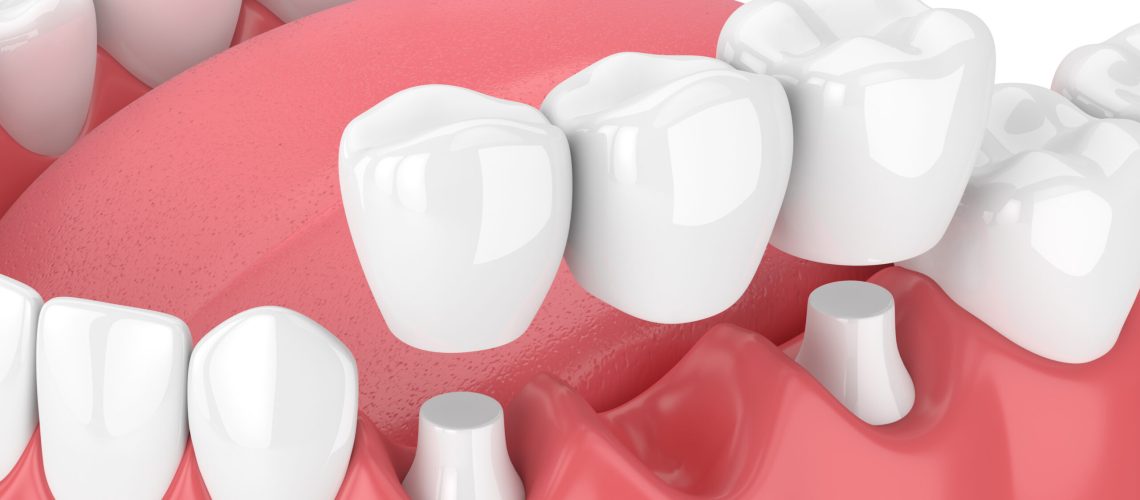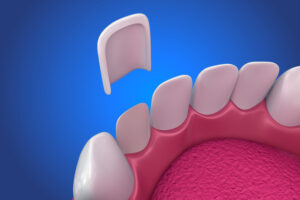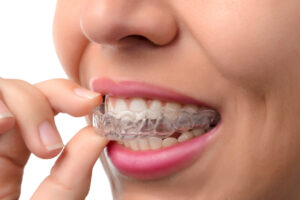By the team at Marina Dentistry, Marina del Rey, CA
Missing teeth affect more than your appearance—they can change the way you eat, speak, and even the shape of your face.
If you’re ready to restore your smile, two of the most common—and reliable—options are dental implants and dental bridges.
Understanding the differences can help you make an informed decision that fits your lifestyle, budget, and long-term oral health.
Why Replacing Missing Teeth Matters
- Maintain jawbone health – Empty spaces cause the bone to shrink, changing facial contours.
- Protect remaining teeth – Neighboring teeth may shift, creating bite problems and uneven wear.
- Improve speech and function – Replacing missing teeth restores normal chewing and clear pronunciation.
- Boost confidence – A complete smile helps you feel at ease socially and professionally.
What Are Dental Implants?
A dental implant is a small titanium post that acts like a natural tooth root. After placement in the jawbone, the bone fuses to the implant (a process called osseointegration). A custom crown is then attached, creating a tooth that looks and functions like the real thing.
Key Advantages
- Longevity – With good care, implants can last decades or even a lifetime.
- Bone preservation – Implants stimulate the jawbone, preventing the bone loss that occurs when a tooth is missing.
- Natural appearance & feel – They look, feel, and function like natural teeth.
- Independent support – Adjacent teeth remain untouched; no need to file them down as with a bridge.
Considerations
- Surgical procedure required – Placement involves minor oral surgery.
- Healing time – Bone needs several months to integrate with the implant before the final crown is attached.
- Up-front cost – Typically higher initial investment than a bridge, though often lower lifetime cost due to durability.
“For many patients, implants are the gold standard because they replace both the root and the crown, maintaining bone and long-term oral health,” says Dr. Sameer Aljanedi, implant and restorative dentist at Marina Dentistry.
What Is a Dental Bridge?
A dental bridge literally “bridges” the gap left by a missing tooth. It consists of one or more artificial teeth (pontics) anchored by crowns on the natural teeth adjacent to the space.
Key Advantages
- Quicker process – Bridges can often be completed in just a few weeks.
- Non-surgical – No implant surgery or bone grafting required.
- Lower initial cost – Typically more affordable up front compared to implants.
Considerations
- Impact on neighboring teeth – Healthy teeth must be reshaped and crowned to support the bridge.
- Bone loss continues – Because there’s no root in the jawbone, bone resorption still occurs over time.
- Replacement needed – Bridges generally last 7–15 years before they need to be replaced or repaired.
Side-by-Side Comparison
| Feature | Dental Implants | Dental Bridges |
|---|---|---|
| Longevity | 20+ years or lifetime with proper care | 7–15 years on average |
| Procedure | Minor oral surgery, longer healing | Non-surgical, faster |
| Bone Preservation | Prevents bone loss | Bone loss continues |
| Impact on Neighboring Teeth | Leaves adjacent teeth untouched | Requires crowns on adjacent teeth |
| Maintenance | Brush and floss like natural teeth | Special floss threaders needed |
| Initial Cost | Higher | Lower |
| Long-term Value | Often lower lifetime cost | May require future replacements |
Which Is Right for Your Marina del Rey Lifestyle?
Consider Your Oral Health
- Strong bone and healthy gums favor implants.
- If bone is thin, bone grafting may be required, which can extend treatment time.
Evaluate Your Timeline
Need a quick solution before a big event or extended travel?
A bridge can usually be completed in a few weeks, while implants may require several months from start to finish.
Budget and Insurance
Although implants cost more initially, many patients find their long-term value higher because they rarely need replacement.
Dental insurance often covers a portion of either treatment—our team can help you maximize benefits and explore flexible financing.
Personal Preferences
If you prefer a permanent, natural-feeling tooth and are comfortable with a minor surgical procedure, implants are likely your best fit.
If you’d rather avoid surgery or need a faster, lower-cost solution, a bridge may suit you better.
What to Expect at Marina Dentistry
Your journey begins with a comprehensive consultation:
- Digital 3D imaging with our advanced iTero scanner for precise planning.
- Personalized treatment plan explaining timelines, costs, and expected results.
- Discussion of your goals—function, aesthetics, and long-term maintenance.
Whether you choose dental implants or a dental bridge, our team provides:
- Gentle, patient-centered care
- Transparent pricing and flexible payment options
- Follow-up visits to ensure your new restoration looks and feels natural
FAQs (for FAQ Schema)
Are dental implants painful?
Most patients report only mild discomfort during healing, similar to a simple tooth extraction.
How long does a dental bridge last?
With good home care and regular checkups, a bridge typically lasts 7–15 years.
Which option looks more natural?
Both can look natural, but implants often provide the most lifelike appearance and feel because they mimic a tooth root.
Ready to Restore Your Smile?
Whether you’re replacing a single missing tooth or several, Marina Dentistry can help you choose the best solution for your lifestyle.
Call (310) 578-5000 or request an appointment online to schedule your dental implant or bridge consultation in Marina del Rey.




